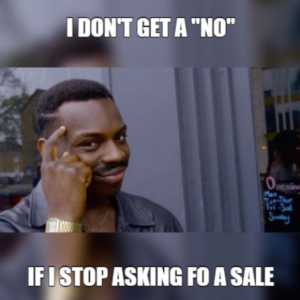
Every homeowner has a task that they do not want to do, whether it is electrical, plumbing, or as simple as replacing a light bulb — we all know what they are.
When we think about doing this work ourselves, our brain sends an immediate trigger that looks something like:

For me, I had the gutter from hell. The instant I saw it, I knew I never wanted to touch it.
It was a gutter that had a rotted away fascia that you knew would only come off in bit sized pieces, and a spout in a location that could only be reached from extending your body from a ladder a meter away. This made replacing it come with the bonus of pulling a muscle and having your life flashing before your eyes at the same time!
But yet, as you can tell from the blood stain that still rests on the gutter today, my decision to never do this project changed.
So, what made this change of direction? I started to breakdown my decision process, and realized that my quick decision actually involved two variables:
- How badly do I want it to be done? Could I let it be, and not touch it at all?
- How much was I will to pay for it to be done? What amount of money was I willing to pay to potentially save my life?
The gutter had been an eyesore ever since I moved in,so I knew this project was a necessity. Although because this upgrade, unlike a kitchen remodel, adds no value to the house I did not want to pay a lot for it.
So my “No” turned into, “No, not doing it unless unless it ends up costing more than $600.”
After an extremely large quote from a gutter professional. Click here for the full rant on that subject.
I drove over to Home Depot and started my hellish project.
After 5 flesh wounds, 2 days of work, and $300 – I was left with a new gutter and sense of pride.

How does this relate to marketing your business? It doesn’t – I just wanted to let you know that I single-handled installed my own gutter!
Just kidding.
The point I am getting at is that it is very easy to make immediate decisions, especially in a quick moving business. Sadly, these quick decisions commonly lead to saying “no” to projects that fall outside the norm of the company or your preferences.
When decisions are made quickly, they rarely look into all the details that go into them. Things like high cost, large time investment, or increased risk of failure can lead to an immediate denial from any project moving forward.
Although saying no to these outliers may save you from some losses, they also stop companies from being truly innovative.
If a company can move away from the thought process that every decision is either “Yes” or “No” and start thinking more about what would make a NO become a YES – businesses can drive growth, knowledge, and great company moral.
Let me explain:
I am sure you have had a boss or at least a friend that had the attitude, “my way or the highway.” They need to have things done in a very specific manner and tend to not accept things outside of that.
Companies also tend to create this same kind of culture. Some companies are more innovative, some are more prone to take risks, and some tend to have very strict guidelines to how things must be done.
When a company gets to be a certain size, these restrictions are at times needed to keep order, but that should not get in the way of being innovative.
In my professional career, I have seen a lot of ideas that got shot down from social media to new product introductions that held a lot of merit, but were immediately not pursued due to their overpriced budget or not aligning with the company’s mindset.
I have found that these decisions of saying no, can be far more productive if you say yes with restrictions. “Yes, you can try this social media..but with this budget until we see it being beneficial” – “I will say yes to this new product, IF you can show a market need and align it to our brand”
by moving to this mindset, here is what you will see:
Top performance from employees
Let’s say a your marketing team has suggested 2 very different marketing campaigns that are targeting web traffic through back-links as a strategy, and another that is trying to create thought leadership in the industry. Both will potentially take a lot of time and money to communicate with other websites and create content.
At this time, you may not have a budget that supports that type of expenditure. Therefore you respond, “if we can get both KPIs for the cost of a single campaign, I will say yes.”
Although this is a “No” in many ways, you will start to notice employees enjoy challenges and are capable of generating creative ways to satisfy the requirements.
For example, maybe you reach out to other thought leaders for an interview. You send over questions and promote it on your site. Due to the flattering nature of the article, the company promoted will link to it and share it to their contacts. This way the content was free, thought leadership is gained, and a back-link created.
Morale Boost
In my first sales job, I heard the word “no” more than 50 times a day.. some of them even said it in more creative ways that involved 4 letter words.
When you hear so many NOs you tend to stop thinking there will ever be a Yes.
Once you believe that you will never receive a Yes, it makes no sense to even try for it. This leads to people thinking they do not have an power to make a difference, and being unproductive in the workplace.

Growth of opportunities
By giving a Yes with requirements, you are providing transparency into the decision making process. Employees will start to notice patterns around what usually gains approval. They will then create opportunities or ideas that meet these KPIs in a more efficient manner generating more acceptable pitches in fewer time.
Innovation
Giving a yes with guidelines, forces companies to do more with less. In the process, businesses will stumble upon new efficiencies, strategies, or technologies that allow the business to develop a more scale-able company structure.
Want to subscribe?
What did we just learn about saying no.
[mc4wp_form id=”428″]




